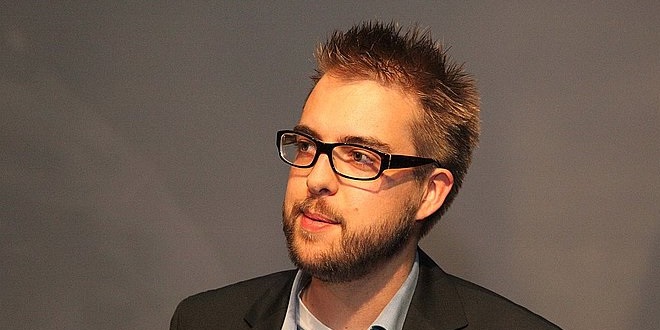
by tomnora | Jan 12, 2015 | Angel Investor, Business Development, CEO Succession, Revenue Growth, SaaS, startup CEO, Tom Nora, venture
I recently completed a short term project with ReviewInc (RI), an online review management platform for businesses to mange and enhance their review process. RI is a small Los Angeles are company that’s been in business for about 3 years with a couple of major pivots under their belt.
My role was to analyze all aspects of the company and then find their unique opportunities to “take it to the next level”. It opened my eyes to the fascinating ( never thought I’d say that about reviews) details of this market segment and its ubiquity in all important Online Marketing.
RI primarily needs to accelerate revenue growth and market share in order to build new products, increase salaries to market rate and defend their position against a large number of competitors. I found several areas of excellence as well as several more that need enhancement. In the 90 period of my consulting they made many positive changes in a short time period with their minimal budget.
> The Larger Market:
The Online Review infrastructure industry is highly under exposed in the overall Internet marketing world. When most people think of reviews, they think of negative reviews people write when they’re unhappy about their service at a restaurant or tire dealership. Even expert Internet marketers are pretty unaware of the market and its details. Until recently I was fairly unaware of this market, more focused on social, dat analytics, seo, superior web development, content management and CMS design as my priorities for Online Marketing projects and conversion. But now I realize “the review piece” should be considered in any Online Marketing strategy and execution. It’s content, social, seo enhancing and is impacting a vast majority of online purchasing.
Yelp pioneered 2.0 of this industry over 10 years ago and should be given credit for that. Now the market is estimated at over $10 billion revenue per year, probably a lot more if you include all the sub-markets and service agencies using it for their business development and product lines. It’s a lot more than restaurant reviews.
Online review management systems are an established part of the web for both consumer and B2B. In the consumer markets, 86% of all customers rely on online reviews when they buy something, and 72% of all people say online reviews are their top reason for choosing a local business. For B2B, online reviews and testimonials and becoming a requirement in healthcare, automotive, government and other industries. And there’s a ton of overlap, making the line pretty fuzzy.
No matter the segment, reviews directly impact sales, market position and business health. Yelp is the giant in the industry at a $4 billion market cap, but there are over 1,000 other review companies in all segments of business and consumer markets. Other heavy hitters are Trip Advisor, Glassdoor, Angie’s List, Edmunds.com, NewEgg.com, La Fourchette, Menu Pages, Doctor.com, Best Buy, Michelin, Cityvox Avvo, IMDB, Call a Plumber, Brad’s Deals, HotFrog Gayot.com, Rotten Tomatoes, Ripoff Report and Zagat.
It is a quickly evolving market that will continuously challenge current players, as Yelp has seen as it has lost almost 50% of its market value in the past 12 months.
> Market Segments:
Online Reviews, Review Management, Restaurant Reviews, Employer Reviews, Movie Reviews, Social Analytics, Reputation Management, Customer Service Feedback, Review Aggregation.
> Company Summary:
Saas Product launched, several Fortune 1000 customers, currently growing. Self funded to date, 10-20 employees.
> The Bottom Line:
ReviewInc. is doing a lot of things right in product innovation R&D efficiency and anticipating user needs. They will have to continue to innovate and adapt to the market and win big deals to grow to a sufficient size to be a factor in this market; they have many direct competitors. They need to be sufficiently afraid of this ruthless market and use it for motivation. As Andy Grove says “Only the paranoid survive.”
If RI wants to grow faster they will need to take the company through the chasm and make critical changes to their management team, product line and UX. Not all companies want this; they would prefer to fly under the radar, so 2015 will determine which path RI takes.

by tomnora | Dec 19, 2014 | Business Development, early stage, founder, interviews, Launch, Revenue Growth, Scalability, startup, startup CEO, Tom Nora
I’ve been spending a lot of time in the WordPress as a development platform world lately, kind of a new thing for me.
I’m finding many unexpected business advantages in this world for a group of websites I am building to bootstrap a few “baby startups”.
What this has done for me is vastly increase my interest in tactical data-driven marketing on the web –– growth hacking, content management, agile iterative web development and marketing, and yes, even SEO.
The ecosystem of WordPress is actually fascinating and lots of fun, full of solo-prenuers, bootstrapers, hackers, marketers and doers. It’s a somewhat different world than the VC funded startup world that is my day job.
The link below is one of the best interviews I’ve seen, from Collis Ta’eed, a very humble and honest guy who started Envato, a marketplace for web dev themes and many other creative resources.
In a very short time he covers to first 6 months of his company, unafraid to discuss failures, missteps and instances of pure luck. This is the opposite of many startup interviews where the founder claims brilliance and a smooth path and takes credit for everything.
Very inspiring, check it out…
http://wptavern.com/ceo-and-envato-co-founder-collis-taeed-on-the-first-6-months-of-envato

by tomnora | Oct 26, 2014 | Angel Investor, early stage, founder, Hawaii, Revenue Growth, Scalability, startup, startup CEO, Tom Nora, venture
How is it that so many people associated with startups reap the financial benefits, yet others just as close get no financial upside This is a source of frustration among many people in the startup sphere. Imagine if you’re in Silicon Valley right now with no equity in a tech startup, but associated with several people getting six figure “bonuses” because they somehow wound up with some stock in one.
The free parties (or not free) and swag and great stories and boat rides in the bay are nice. Sometimes you’ll even score an iPad or Apple TV, but it’s not the same as being one of the insiders.
Often as startups grow and maneuver their way through the jungle of success or failure, they have a lot of help from those around them.
Often many these people don’t have any equity or upside from their advise or moral support or money lending, or even the spare couch they let you sleep on when you were in their town.
If the startup actually makes it to an IPO, there is actually something you can do.
It’s called the “Greenshoe”. You have to be very careful about this, you can’t imply or promise anything in advance, and it only works when the company goes public, but the Greenshoe is an amazing award for those involved that don’t have equity.
The Greenshoe is an over-allotment of stock options, up to 15% of the total offering at time of IPO. You can offer these options to virtually anyone, friends, family, people who helped your company. Since they’re options, acquirers only exercise if the stock goes up, and have no downside risk or capital outlay.
Upon the IPO event, the option owner can gain the upside if the stock goes up over the initial offering price and essentially collect that difference.
I’ve used it a few times when I was lucky enough to be able to offer it to friends and family. Strangely enough, some people have declined, because they’re not sure it’s legal; they’ve never heard of it. Others have bought themselves a new Lexus with it.
Here’s more info on wikipedia:
Greenshoe
The Greenshoe should provide motivation for all of us in the startup world to try to continuously build our company steadily, continuously and profitably and to know that you can make many peoples lives a little bit better by sharing the wealth. The rewards are pretty amazing.
Contact me at
#Web #Development #Digital #Strategy #Art| tomnora.com

by tomnora | Aug 26, 2014 | Angel Investor, Drupal, founder, PHP, Revenue Growth, SaaS, Scalability, startup, startup CEO, venture
As further market proof of the power of Drupal in the enterprise, Acquia has received about $100 million in funding in the past 3 months, which puts its valuation at over $1 billion.
http://j.mp/nora-acquia
There’s a lot of buzz about the Amazon acquisition of TWITCH this week. As a personal friend of the original investor, I’m very happy for this transaction – after 7 years of work, repositioning, and sticking to it their vision has paid off. But that’s a different article…
Less prominent in the news, but possibly more important, is Amazon’s investment in ACQUIA. Acquia, Inc. is the for-profit company founded by Dries Buytaert, the inventor of Drupal, to support his open source project. Drupal was launched in 2001, and Acquia started in 2007. When Open Source software projects are launched, the progenitors often start a for-profit sister company to garner some income from training, support and consulting. Because they are open source. the original products can’t generate revenue, so when these OS projects occassionally blow up into phenomenons like Drupal and WordPress have over the past few years, it’s gratifying but also quite frustrating to watch others derive so much value from your baby while you toil away to lead its growth with no financial return. Plus, there are tons of expenses like servers, bandwidth, office space, travel and the time of many professionals.
Red Hat was one of the first of these types of companies bridging open source with big finance, leveraging Linux support into a profitable business, also leveraging the enterprise. They kind of invented this business model. Sun Microsystems and others almost made it happen, but they were only semi-free. Google has optimized this open source to freemium model in almost all of its products.
But Drupal has succeeded way beyond it’s original expectations. It was originally started as a college dorm project, where many of the best products on the web seem to hatch. It gained recognition during the 2004 presidential campaign when Howard Dean’s IT director decided to use it as a platform for community and campaigning. After that it quickly gained credibility and spread throughout government, and corporate America.
Drupal is now driving some of the largest and most critical websites in the world, including The White House, The Oscars, Twitter, Mercedes Benz, Warner Music Group, The Louvre Museum, The City of Los Angeles and Stanford University. Over its 13 year life the web has vastly changed from primarily static pages to dynamic database driven automated (“rendered”) web page serving, which Drupal excels at. The average website size has also greatly increased, aided by automated rendering systems like Drupal and others. The term Content Management System has become mainstream in everything from the Fortune 500 to small businesses.
Some of Drupal’s success has come from luck, but most of it has been because of strategy and excellent timing. Dries has carefully pushed the technology not to the bleeding edge, but towards the modern edge where enterprises are comfortable. He and his team have avoided many temptations to try new fads, make big changes and try to grow faster. Currently they face enormous pressure to innovate faster, and are responding with Drupal 8, which will incorporate many new modern web architectures previously not part of the Drupal platform.
Acquia has been critical in supporting, guiding, enhancing and positioning Drupal for the past 7 years. It was a startup that launched with funding from day one and has never looked back.
Amazon’s motivation in buying into Acquia is a bit more self serving. Acuia provides premium, high security, supported hosting to it’s customers, which all runs on top of Amazon AWS. Amazon can see that some of AWS most robust and challenging work comes from Acquia with Drupal. For example, Acquia runs its Drupal infrastructure on more than 8,000 AWS instances and serves more than 27 billion hits a month (or 333TB of bandwidth). Amazon has a strategic value beyond many other companies or VCs in their investment.
What will come next? Will Amazon try to acquire all of Acquia before the inevitable IPO? I think we can bet on that.
This is a very contemplative time for Buytaert – he has fierily protected Drupal’s independence and strategic positioning, taking risks but protecting his large customers from drama, can he keep Amazon and Bezos at bay? I have no doubt he will, for he is a true “Startup CEO”, even though his title is CTO at Acquia.
@tomnora
more info on the funding round from @thewhir http://j.mp/nora-acquia

by tomnora | Aug 6, 2014 | Business Development, CEO Succession, early stage, founder, Revenue Growth, Scalability, startup, Tom Nora, venture
“Creativity takes courage.” –Henri Matisse
This is one of my favorite quotes about innovation, by an innovator who is still revered 100 years later; it’s the first thing you’ll see if you go to my personal website http://tomnora.com/ . Matisse was an amazing innovator, and his innovation and originality
Innovation, Originality, Creativity – why are these things so important in the tech startup world? And what do they have to do with art or painting?
I have the opportunity to visit many secondary and tertiary startup markets in my travels, meaning not Silicon Valley or New York, and one of the things that always strikes me is the lack of originality in almost every company pitch I see or hear.
I can see that the entrepreneurs I meet are sincere, have usually put a ton of work and pride ion their invention or product. Often they have put a fair amount of personal or family capital into the venture (these days that’s usually their parents money).
The major flaws in their planning process are denial and ego fortification – they don’t do enough homework to see how many are already doing something similar because they don’t really want to know; and they highly overrate themselves as amazing entrepreneurs. This is a bad combination for success, but I see it daily.
I get it; I know it’s more difficult than ever to build a real career and easier than ever to start a company. But the very core of creating an interesting and new business should be the concept of originality. Some originality, enough to be different, unique, without being too weird.
Real originality comes from within, because it is inspired, comes from adrenaline and emotion, not from a spreadsheet or desire to merely make money. Finding the mid point between originality and capitalism is what I define as business innovation.
There’s nothing new under the sun, so you must critically modify, hack, or turn sideways existing systems with a truly new vision. Instead of just copying or slightly modifying something you see, try to take it a few steps further.
One of the quite innovative methods Matisse and his peers used was finding inspiration from other skills they already knew, leveraging their expertise as craftsmen. Matisse was a draftsman, a printmaker and a sculptor, and you can see these influences in his paintings.
Part of the magic of great business innovations is knowing which rules to break. Matisse broke some of the rules, but kept many intact. The rules about the way business processes flow are too often just accepted, but if you can analyze them, find an achilles heel, then innovate a better answer. Get rid of the obsolete rules without breaking the good ones, and great things will happen. It’s about where to hack and where not to.
I went to a pitch fest in one of those secondary markets the other day. Most of the presentations were weak delivery, boring, been done before and uninspiring. But there was one that was pretty amazing, by an 18 year old who had become deaf at 12. He has developed an exercise system for handicapped people; you tell by his excitement and thought process that he was inspired, and created true innovation. He wasn’t polluted by how corporations work or the rules of business – he was still in high school.
Another Matisse quote is “There are always flowers for those who want to see them.” Look carefully, take the extra time and find the uniqueness in any idea you want to realize – it’s there. Find me on twitter at @tomnora
by tomnora | Dec 28, 2013 | Business Development, CEO Succession, founder, Revenue Growth, SaaS, startup CEO, Tom Nora
Maximizing shareholder value: The goal that changed corporate America – The Washington Post.
via Maximizing shareholder value: The goal that changed corporate America – The Washington Post.




